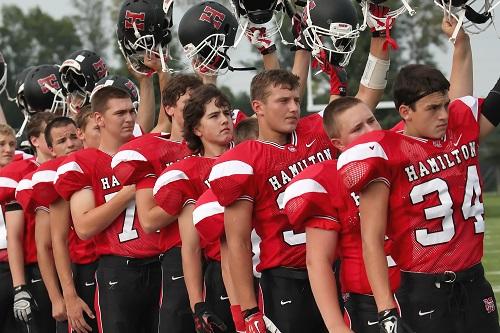

According to Athletic Business, the University of Wisconsin School of Medicine and Public Health released a study late last week, suggesting the state's high school sports have not caused an increase in COVID-19 infections among athletes.
The Wisconsin State Journal noted that researchers had surveyed 207 schools that restarted fall sports in September, representing more than 30,000 athletes, more than 16,000 practices and more than 4,000 games.
The survey found 271 athletes contracted the virus overall compared with 2,318 Wisconsin children aged 14-17 over the month of September. No sports were found to have a higher incidence rate of COVID-19 overall than 14-17 year-olds. None of the cases among the athletes resulted in hospitalization or death. Of the 209 athletes who knew where they contracted the virus, only one case was attributed to participation in sports.
A downloadable version of the summary can be found at this link.
It is essential, however, to note the preventive measures that were in place throughout the period athletes were competing. All the schools had a formal plan in place to screen for, and reduce the risk of, transmission. Measures taken included monitoring for symptoms, temperature checks at home and on site, masks for staff and players off the field, social distancing, increased facility cleaning and staggered arrival and departure times for events.
The Wisconsin Interscholastic Athletic Association, which governs high school sports in the state, issued a news release calling the study "encouraging,” – a feeling which is likely shared by many reading this news.
According to the State Journal, COVID slammed into Wisconsin in March, forcing the cancellation of spring, then fall, sports. The WIAA created an alternative spring season for districts that didn’t feel comfortable playing in the fall.
“About 70% of the state's football programs opted to play in the fall,” noted the article. “Other schools, including those in Dane County's Big Eight Conference, opted to wait until spring.”
But waiting isn’t always the right answer either. The Wisconsin scientists found that while did students have a low transmission rate for COVID from playing sports, they had an enormously higher rate of depression and anxiety from not playing sports. The full study can be found here.
“Participation in sports has tremendous physical and mental health benefits for children, and we have seen worrisome increases in physical inactivity and symptoms of depression and anxiety among adolescents in particular during the COVID-19 restrictions,” noted Dr. Drew Watson, who analyzed the data from the University of Wisconsin study. Additional studies have shown that one-third of formerly active children lost interest in sports during the pandemic.
The National Federation of State High School Associations (NFHS) has created a map that updates modifications to high school fall sports seasons by individual states. Another great tool – more general in terms of gathering restrictions, quarantines and state-by-state analyses, was compiled by The Points Guy and can be found at this link.
Note: Both lists are updated as new data becomes available; the information is not static.
Sports parents, youth sports participants and other supporters of return-to-play philosophies, have banded together, organizing rallies and social media campaigns, with hashtags, including #LetThemPlay becoming one of the hottest and fastest-trending of all. The addition of medical data concerning the safety of sports is likely to assist the cause.
The WIAA, meanwhile, notes that while the data is encouraging, parents should still use good judgment – and not rush into letting children return to the field without understanding the risks.
"We acknowledge that COVID-19 is a dangerous disease that continues to spread throughout the country," the researchers wrote. "It remains unclear, however, whether sport participation with risk-mitigation procedures in place increases the risk of children contracting COVID-19 and passing the virus on to other individuals."

